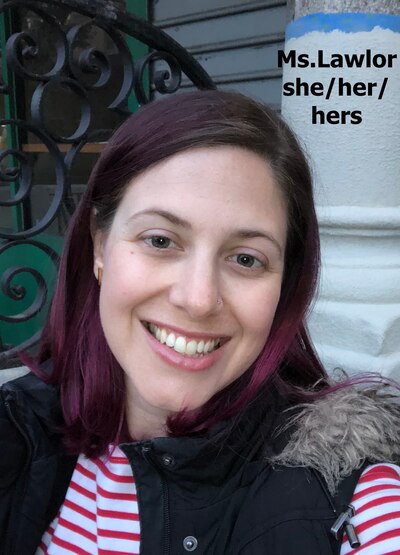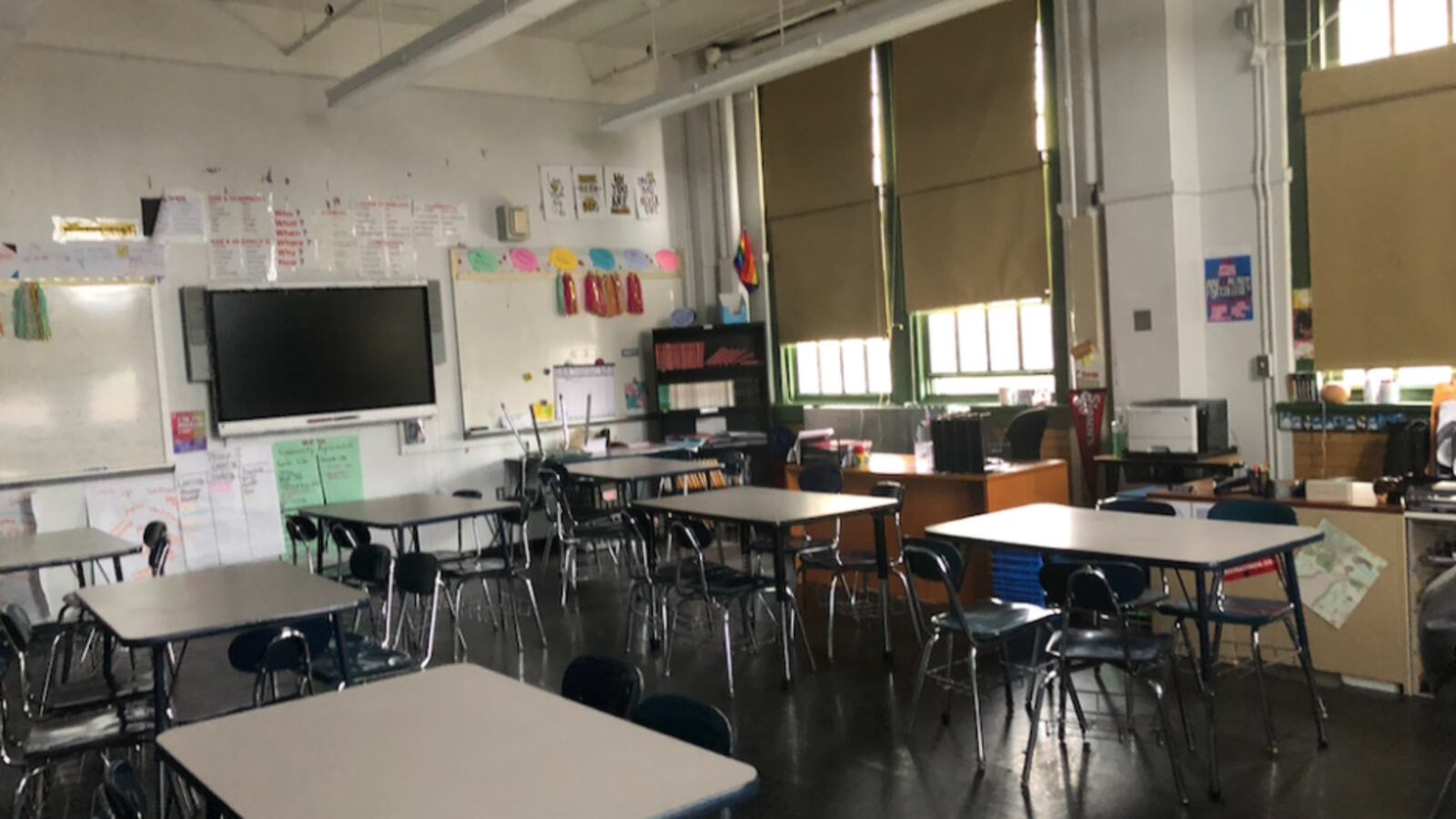On Thursday, March 19, at 3:32 p.m., after a strange week of training on remote instruction, I left my classroom for what would be the last time that school year. At the doorway, I paused, reached into my purse, pulled out my phone, and took a quick picture. It’s a time capsule of a moment before mask-wearing was recommended, and then required, back when the term “social distancing” still felt like marbles in our mouths.

After months away, stepping back into my classroom feels familiar and comforting, but also heavy and constricting, like putting on that favorite pair of jeans after wearing sweatpants every day since March.
On the classroom bulletin board are some of the “Community Photo Projects” from February Break. Students took celebratory pictures as a counter-narrative to what we learned about redlining and its legacy in the Bronx. In the photos, my students are smiling and flashing peace signs. They’re buoyant and spirited and completely unaware of what looms in the not-so-distant future. A handful of students volunteered during lunch to help me arrange the photo projects on the bulletin board. How many of these faces smiling from the back of the room lost a loved one this year? I hope they still know the joy they shared in these images.
The furniture has been rearranged so that the custodians could wax the floors, as they do lovingly every summer. I return to a classroom that gleams. I was obsessively wiping surfaces with Lysol before the building closed. The custodians put in long hours to disinfect the building. No one has been here to sully their efforts. What is a school without children? Clean, for one. Gloomy, mostly.
I return for the first time in mid-August, so my gleaming classroom is stiflingly hot. I open the few windows. It takes me a good 10 minutes to remember where I store the remote control for the air conditioner: in the upper right drawer of my desk. How could I forget that? It takes me another minute to plug in the electronics. I try an outlet near the door, before remembering that I submitted a work order in February to have it fixed. I find another outlet.
My classroom library — two giant bookcases organized by genre — is in disarray. Slanted spines lean into empty space. On Friday, March 13, the last day that I saw my students in person, I implored them, “Take books home. You need independent reading.” None of us knew for sure that we wouldn’t be coming back, but I had a feeling. I wonder how many of those books were read. Even if the books aren’t returned, sending them home with children was the right call. Books are replaceable.
I take down the calendar hanging on the whiteboard. March, April, May, and June go into the trash. The metaphor is not lost on me. The air conditioner is working now and the room begins to cool. It’s welcome because it’s stifling behind my mask.
The lockers are still full of children’s belongings. I had worried about the stench of rotting food, perhaps a bacon, egg-, and and-cheese quarantined in a locker these long, lonely months. Fortunately, that was not the case. I imagine what’s hidden inside — novels, sweatshirts, umbrellas. Most items will get picked up, but some of my students have left New York for good. They’ve gone to live with family in Washington State, Georgia, Pennsylvania. At some point, I’ll request the lock cutter from my principal and clear out their things. I will email those children and ask which items they feel attached to. I will mail them packages with their belongings. They need to know that I still care. Or perhaps, I need them to know that.
We never really said goodbye. Not on Friday, March 13, our last day on campus. Not on Friday, June 25, our last day on Zoom. Of course we said it, but it felt different. I didn’t sign any yearbooks.
I look over at the windowsill behind my desk. Taped there are senior graduation photos from my nine years of teaching for the New York City Department of Education. I remember each student’s name. Some of them wrote messages of thanks on the backs of their wallet-sized portraits. Some shared their gratitude with a hug or a few lovely words. I didn’t add any triumphant graduation photos to my windowsill this year; the kids weren’t in the building to pick up their photos.
Despite these fleeting moments of disquiet, one unique aspect of teaching remains: You get a brand-new start each fall. You shake off the highs and lows of the past year and do it all again, hopefully, with even greater compassion. You make space for a hundred more young people in your classroom and in your heart. Once I meet the students in my pods and in my Zoom rooms, we’ll enter the new school year together with joy.
Teaching has a powerful way of consuming your time that is antipode to the stay-at-home summer of 2020. I’m optimistic that the new school year will sweep away my grief — grief for the hardship and loss my students experienced these past few months, for not being there to offer hugs and high fives, for missing yearbook signing and graduation photo swapping, and for a lackluster farewell. I trust that the new school year will bring with it acceptance, even as I hold on to the wonderful young learners who have filled this classroom with laughter and wonder before.
Krisy Lawlor teaches English Language Arts, English as a New Language, and Journalism. She is entering her 10th — and most challenging — year teaching in the Bronx. This year, she will be teaching in-person and remotely; synchronously and asynchronously; with novels and with PDFs, but as always, with compassion, heart, and warmth.


